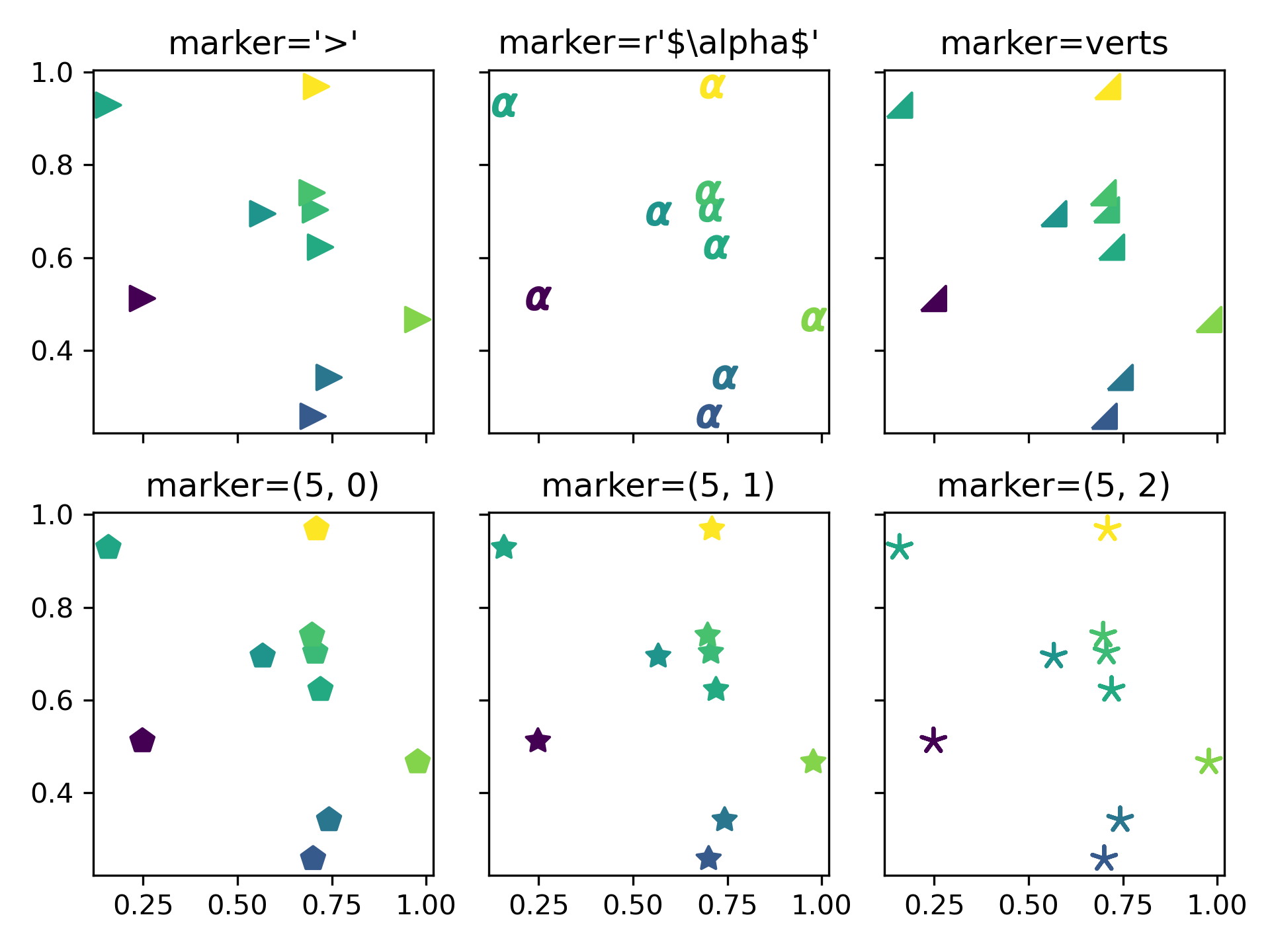>>> """
===============
Marker examples
===============
Example with different ways to specify markers.
For a list of all markers see also the `matplotlib.markers` documentation.
"""
... import numpy as np
... import matplotlib.pyplot as plt
...
... # Fixing random state for reproducibility
... np.random.seed(19680801)
...
... x = np.random.rand(10)
... y = np.random.rand(10)
... z = np.sqrt(x**2 + y**2)
...
... fig, axs = plt.subplots(2, 3, sharex=True, sharey=True)
...
... # marker symbol
... axs[0, 0].scatter(x, y, s=80, c=z, marker=">")
... axs[0, 0].set_title("marker='>'")
...
... # marker from TeX
... axs[0, 1].scatter(x, y, s=80, c=z, marker=r'$\alpha$')
... axs[0, 1].set_title(r"marker=r'\$\alpha\$'")
...
... # marker from path
... verts = [[-1, -1], [1, -1], [1, 1], [-1, -1]]
... axs[0, 2].scatter(x, y, s=80, c=z, marker=verts)
... axs[0, 2].set_title("marker=verts")
...
... # regular polygon marker
... axs[1, 0].scatter(x, y, s=80, c=z, marker=(5, 0))
... axs[1, 0].set_title("marker=(5, 0)")
...
... # regular star marker
... axs[1, 1].scatter(x, y, s=80, c=z, marker=(5, 1))
... axs[1, 1].set_title("marker=(5, 1)")
...
... # regular asterisk marker
... axs[1, 2].scatter(x, y, s=80, c=z, marker=(5, 2))
... axs[1, 2].set_title("marker=(5, 2)")
...
... plt.tight_layout()
... plt.show()
...

